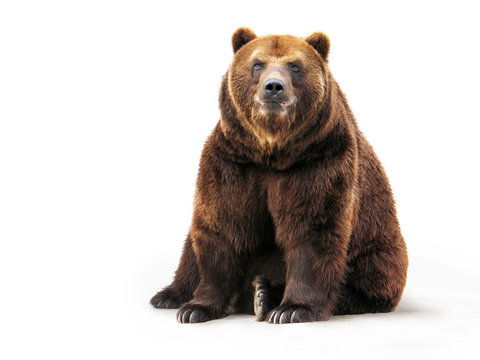Bear

Scientific Name: Ursidae
Family: Ursidae
Order: Carnivora
Species Overview
The family Ursidae includes the following species:
American Black Bear (Ursus americanus): Found primarily in North America.
Brown Bear (Ursus arctos): Includes numerous subspecies, such as the grizzly bear and the Kodiak bear, widespread across North America and Eurasia.
Polar Bear (Ursus maritimus): Native to the Arctic Circle, adapted to life on sea ice.
Asian Black Bear (Ursus thibetanus): Also known as the moon bear, found in the forests of Asia.
Sun Bear (Helarctos malayanus): The smallest bear species, found in the tropical forests of Southeast Asia.
Sloth Bear (Melursus ursinus): Native to the Indian subcontinent, unique for its insectivorous diet.
Andean Bear (Tremarctos ornatus): Also known as the spectacled bear, found in the Andes Mountains of South America.
Giant Panda (Ailuropoda melanoleuca): Known for its distinctive black and white coloring and primarily bamboo diet, native to China.
Physical Description
Size and Weight: Bears range widely in size. Sun bears are the smallest, weighing 25-65 kg (55-143 lbs), while polar bears are the largest, with males often weighing 350-700 kg (770-1,540 lbs).
Appearance: Bears generally have large bodies, stocky legs, a long snout, shaggy hair, plantigrade paws with five non-retractable claws, and a short tail. Each species has distinctive features like the white fur of the polar bear or the dark bands across the eyes of the panda.
Habitat and Distribution
Habitat: Bears are found in a variety of habitats including tundra, forests, mountains, and grasslands.
Distribution: They are distributed across the Americas, Europe, Asia, and the Arctic.
Behavior
Diet: Bears have varied diets; species like the polar bear are primarily carnivorous, while the giant panda almost exclusively eats bamboo. Other species have omnivorous diets, consuming a mix of plants, fruits, nuts, insects, fish, and small to large mammals.
Social Structure: Most bear species are solitary, except during mating season or when females are raising cubs.
Reproduction: Bears reproduce slowly, with females giving birth to one to four cubs every two to three years after a gestation period of about 6-9 months, depending on the species.
Conservation Status
Threats: Habitat loss, climate change, hunting, and conflict with humans are significant threats to bear populations.
Conservation: Conservation efforts include legal protections, habitat conservation, and international agreements such as the Convention on International Trade in Endangered Species (CITES).
Interesting Facts
Bears are capable of standing and walking on their hind legs for short periods.
They have an excellent sense of smell, surpassing that of dogs.
Hibernation in bears involves lower body temperature, slowed metabolism, and reduced heart rate, allowing them to conserve energy during winter.
Комментарии
Отправить комментарий